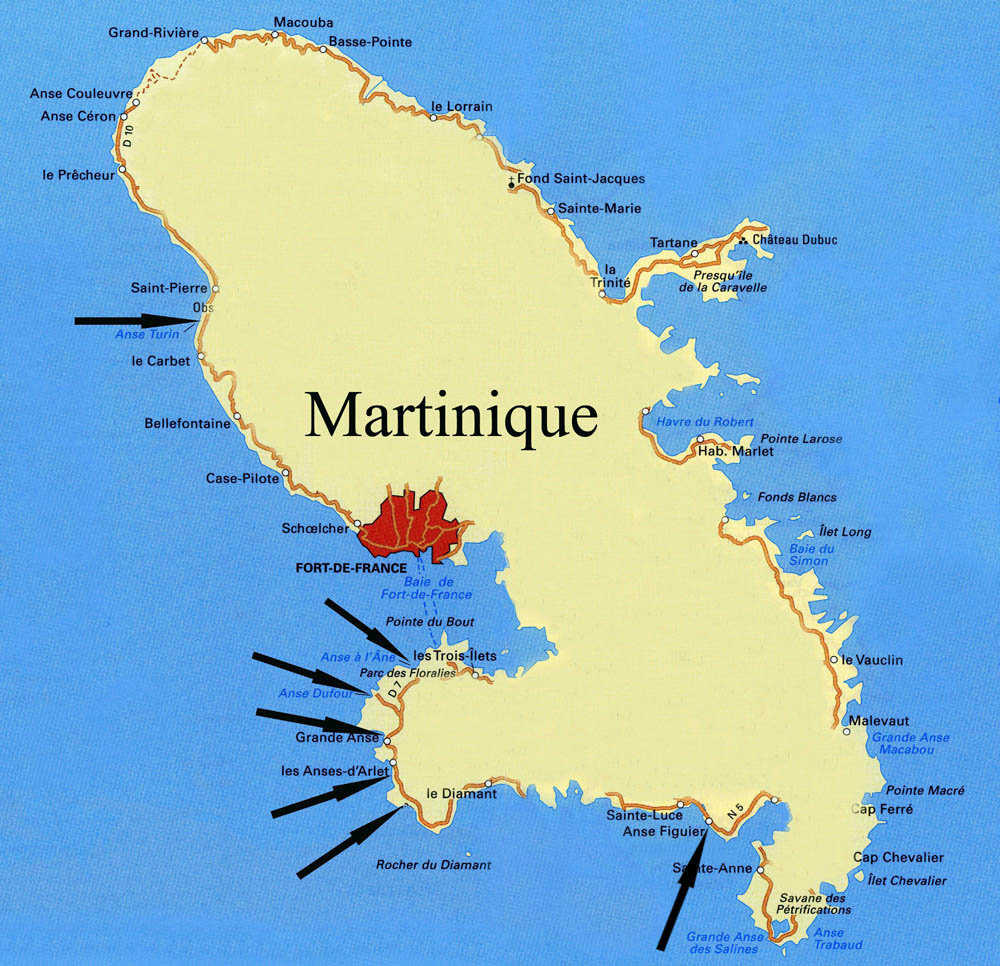Collection of the samples and analysis.
Twelve samples were obtained in March-April 2008 and fifteen in March-April 2009, at depths between -3 and -9
meters, by snorkelling, as follows (from North towards South) :
Samples were collected on 5 of the 7 sites in 2010 and 2011 and on 3 of the 7 sites in 2012, 2013, 2014 and 2015.
The surface of the sediment was scraped on a thickness of 3-4 mm using 50 ml Falcon tubes. Sampling was done in areas where a yellowish-braun film was present. After deep shaking of the samples, the diatoms were separated from the sediment by 2 or 3 differential sedimentations, then fixed with acidic Lugol solution. Later, they were stored in the presence of 2% formaldehyde. The frustules were treated and prepared according to Loir (2004a and 2004b ; see bibliography).
- Anse Turin : 1 sample (medium sand),
- Anse à l'Ane : 1 sample (medium sand),
- Anse Noire : 2 samples (fine and medium sand),
- Anse Dufour : 9 samples (fine, medium and coarse sand),
- Grande Anse : 3 samples (fine sand),
- Anse d'Arlet : 5 samples (fine sand),
- Petite Anse : 2 samples (fine sand),
- Anse figuier : 3 samples (fine sand).
- Anse à l'Ane : 1 sample (medium sand),
- Anse Noire : 2 samples (fine and medium sand),
- Anse Dufour : 9 samples (fine, medium and coarse sand),
- Grande Anse : 3 samples (fine sand),
- Anse d'Arlet : 5 samples (fine sand),
- Petite Anse : 2 samples (fine sand),
- Anse figuier : 3 samples (fine sand).
Samples were collected on 5 of the 7 sites in 2010 and 2011 and on 3 of the 7 sites in 2012, 2013, 2014 and 2015.
The surface of the sediment was scraped on a thickness of 3-4 mm using 50 ml Falcon tubes. Sampling was done in areas where a yellowish-braun film was present. After deep shaking of the samples, the diatoms were separated from the sediment by 2 or 3 differential sedimentations, then fixed with acidic Lugol solution. Later, they were stored in the presence of 2% formaldehyde. The frustules were treated and prepared according to Loir (2004a and 2004b ; see bibliography).
